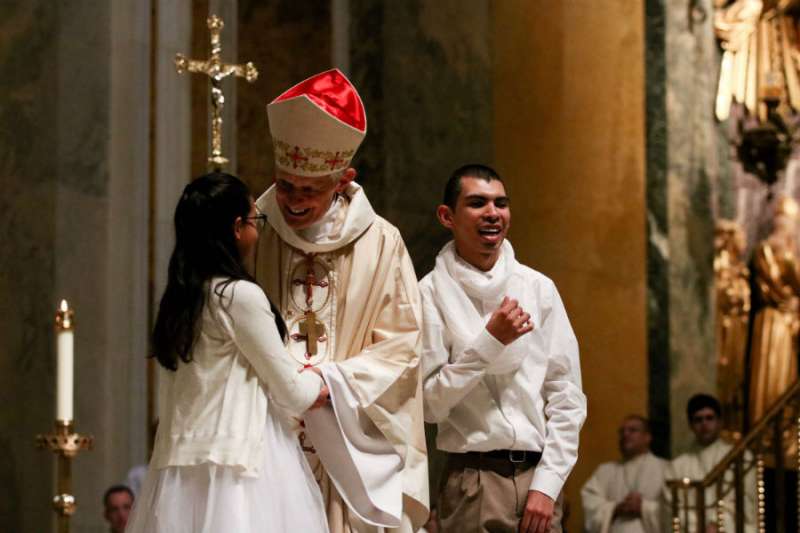The Archdiocese of Washington celebrated the ninth-annual White Mass on Sunday at the Cathedral of St. Matthew the Apostle.
The Mass is held in honor of the dignity of those living with disabilities. It was first celebrated in 2010, and is called the “White Mass” as the color is symbolic of the “dignity shared by all who have been baptized into Christ’s body.”
Those who attend are encouraged to wear white.
The principal celebrant of the Mass was Cardinal Donald Wuerl, Apostolic Administrator for the Archdiocese of Washington, and the homily was delivered by Msgr. Charles Pope.
In his homily, Pope spoke about courage, and drew comparisons to the day’s Gospel, which featured Christ healing a blind man and restoring his vision. Pope said that Catholics should not only think of themselves as the blind man of the Gospel, but also as the crowd and even Christ, in that they are called to help others see.
“It takes courage to see, courage to even want to see,” he explained.
Pope acknowledged that while some people in the room were physically blind, “all of us struggle with a degree of spiritual blindness.”
“There are many things we should see, but do not. Sometimes we are afraid to see, at other times we resist seeing because we know it will make new demands upon us.”
However, “many in our world recoil from looking at or seeing disability,” Pope said, despite the fact that some form of impairment is inevitable as one ages.
These feelings of discomfort towards others result in “many today remaining blind or vision-impaired when it comes to seeing the dignity and gifts of those who are disabled,” he continued.
Expanding his point, Pope shared a story about his late sister, Mary Anne, who was diagnosed with paranoid schizophrenia as a child and spent most of her life in mental institutions and group homes. Mary Anne passed away in 1991, as the result of a fire that she herself likely set.
It was a “great sadness,” said Pope, that it took his sister’s death for him to appreciate her dignity and true suffering. While she was alive, Pope said he did not enjoy talking to her and had complained to his parents when she tried to talk to him.
“I couldn’t see, I was blind, and in a certain sense I wanted it that way,” he said.
After her death, he was able to view her body, which was scarred by the flames. Due to the fire, the funeral directors were unable to change her facial expression, and “she had clearly died weeping,” he said. Pope, too, wept when he saw his sister.
Although he had previously been blind to his sister’s dignity, “that day, looking one last time at her, I received the gift to see her more as God did.”
“And so I was, and in ways still am, the blind man of Jericho,” he said.
“But my sister’s final gift was that God taught me to see through her and I resolved that it should not take a tragic death for me to see the dignity and gifts of those with disabilities or special needs.”
Now, said Pope, it is up to the Church to act as Christ did in the Gospel and “help others to see the dignity of those with special needs and the disabled.” This is, he said, is particularly important in a “culture of death” which permits an extremely high abortion rate for those with a prenatal diagnosis of Down syndrome or other medical conditions, and the increasing legality of physician-assisted suicide.
“This blindness to the dignity of all human persons from conception to natural death is a blindness we are called to heal as the active presence of Christ in the world.”
It is up to the Church, he said, to work to “heal the blindness of so many who fail to see not only the current dignity of those who suffer, but also their future glory.”

